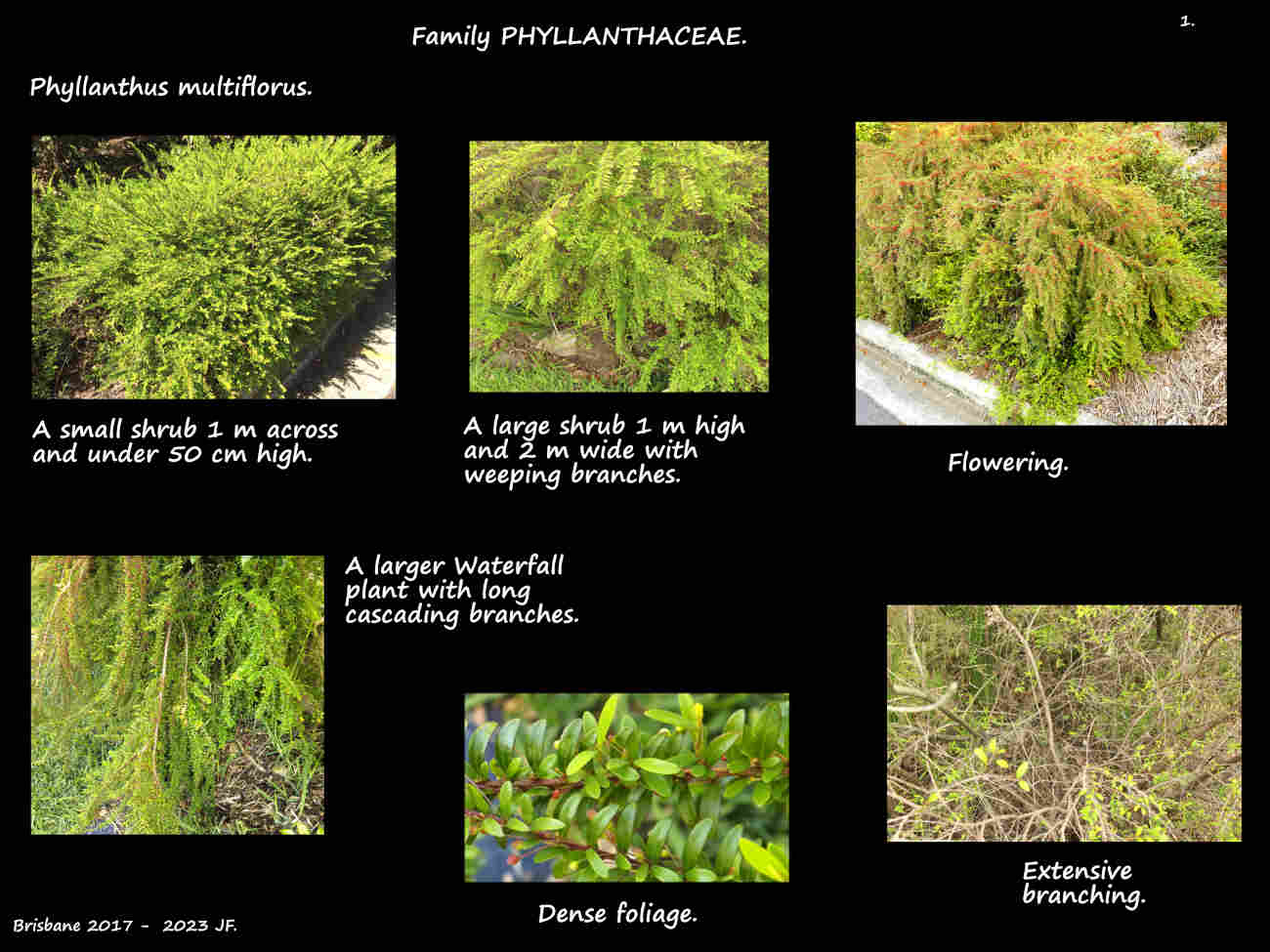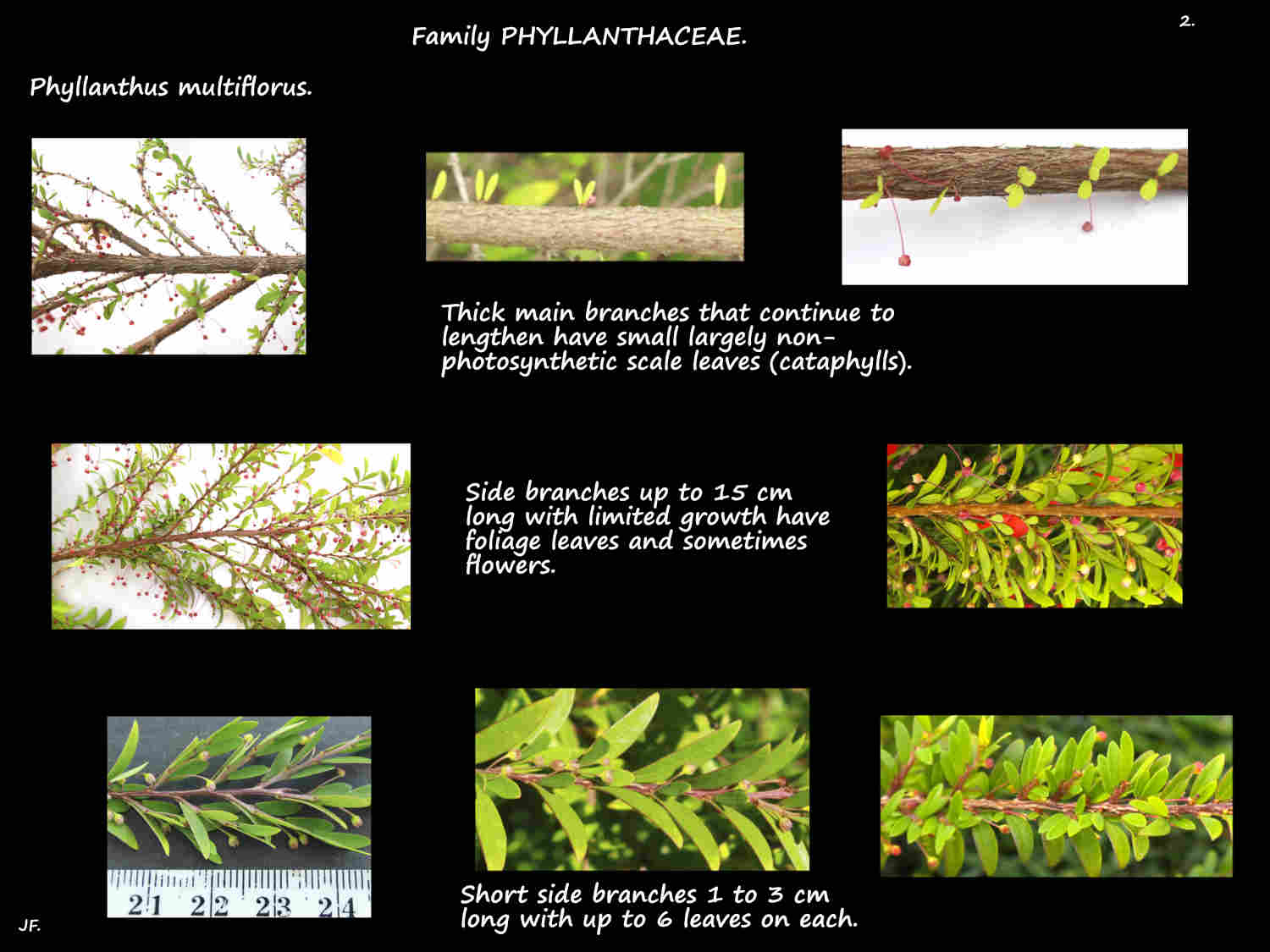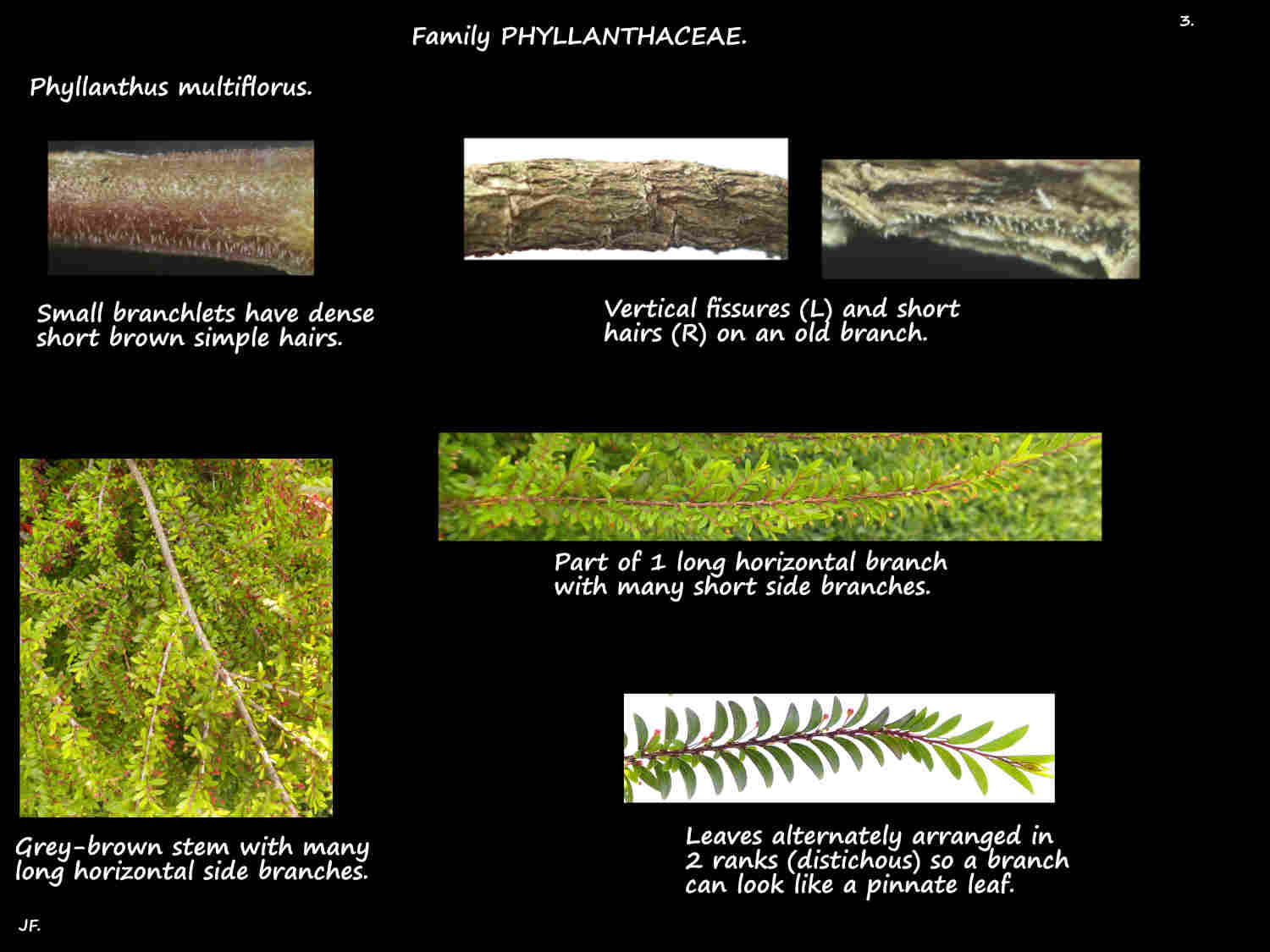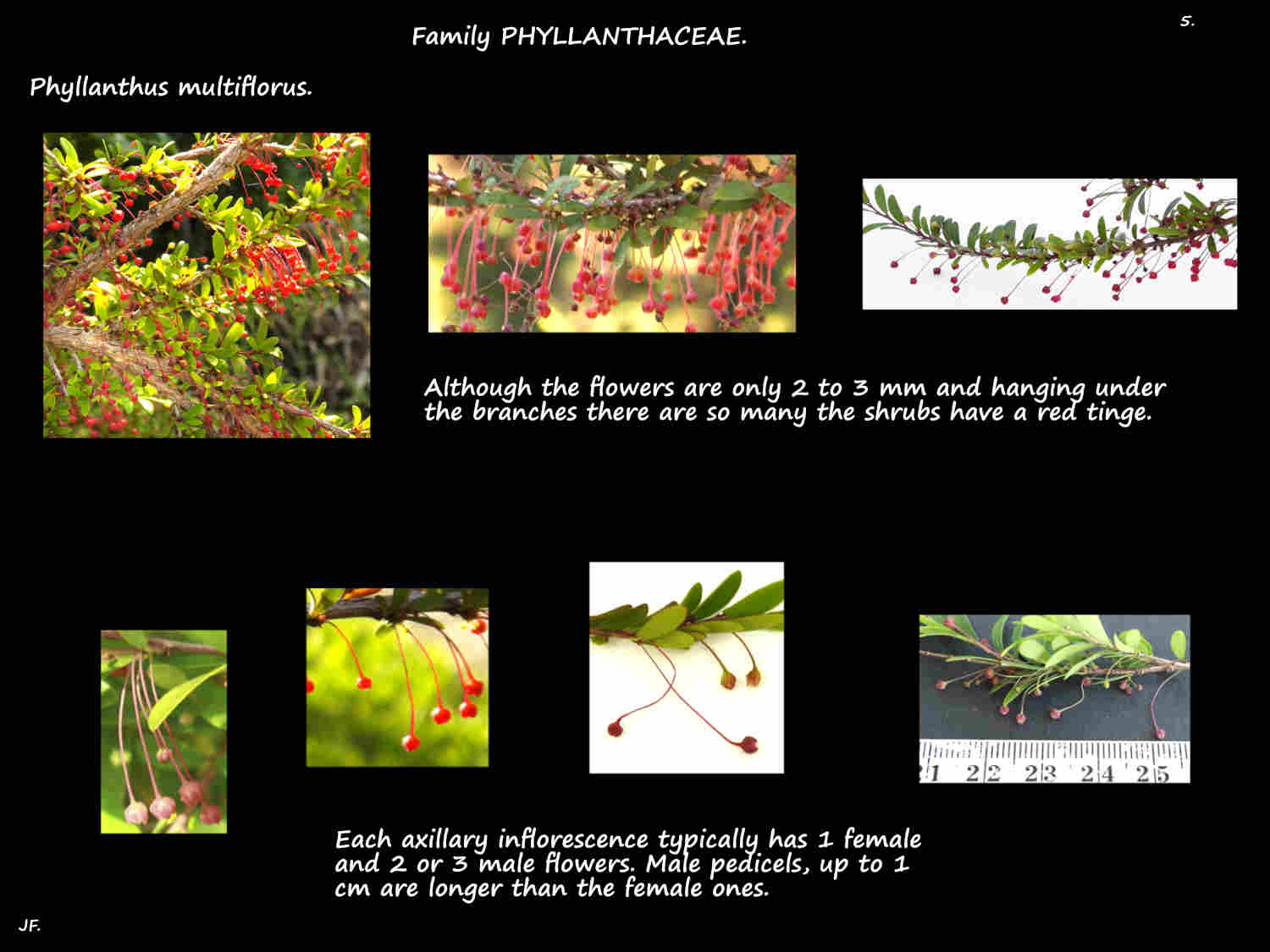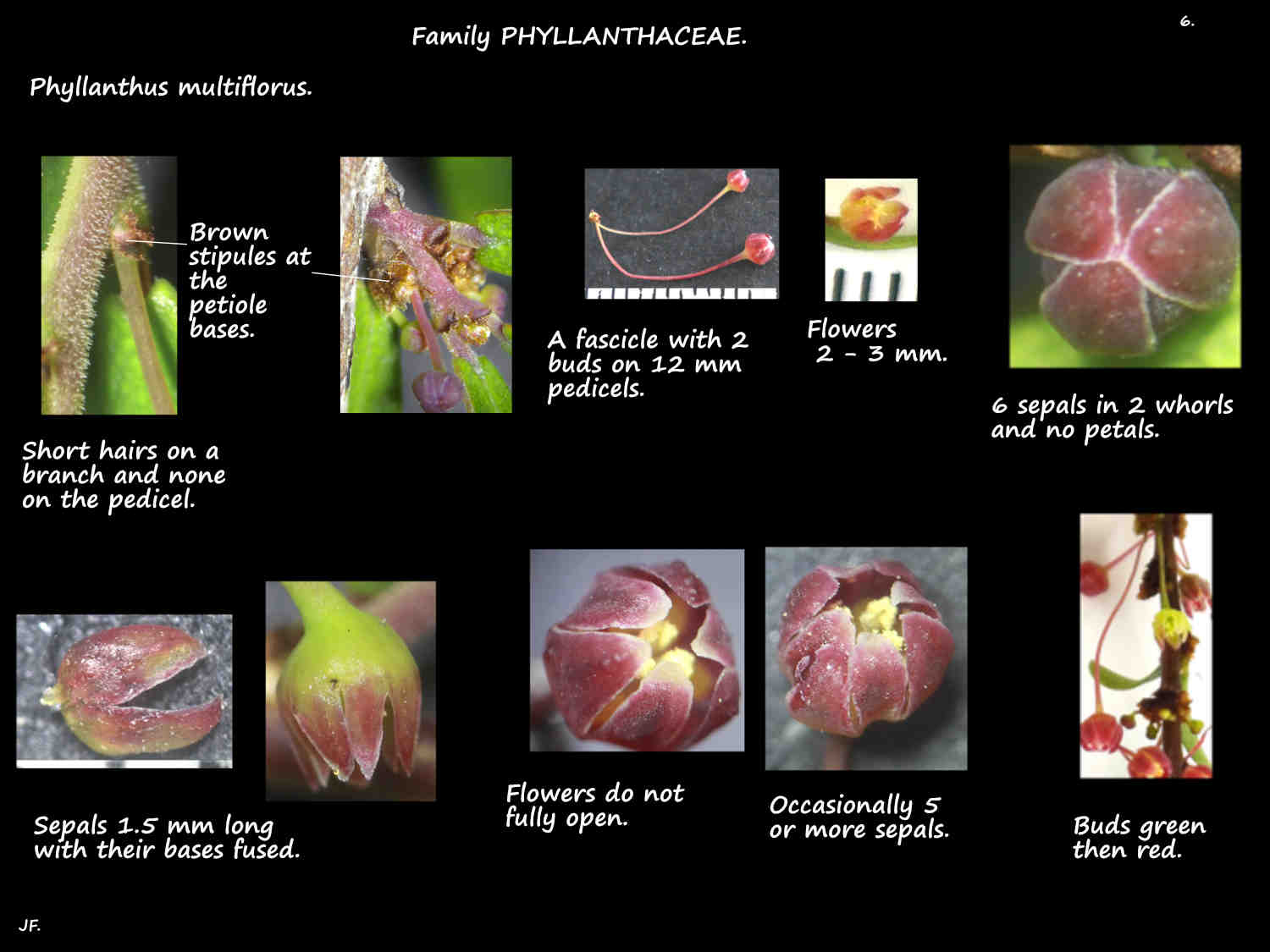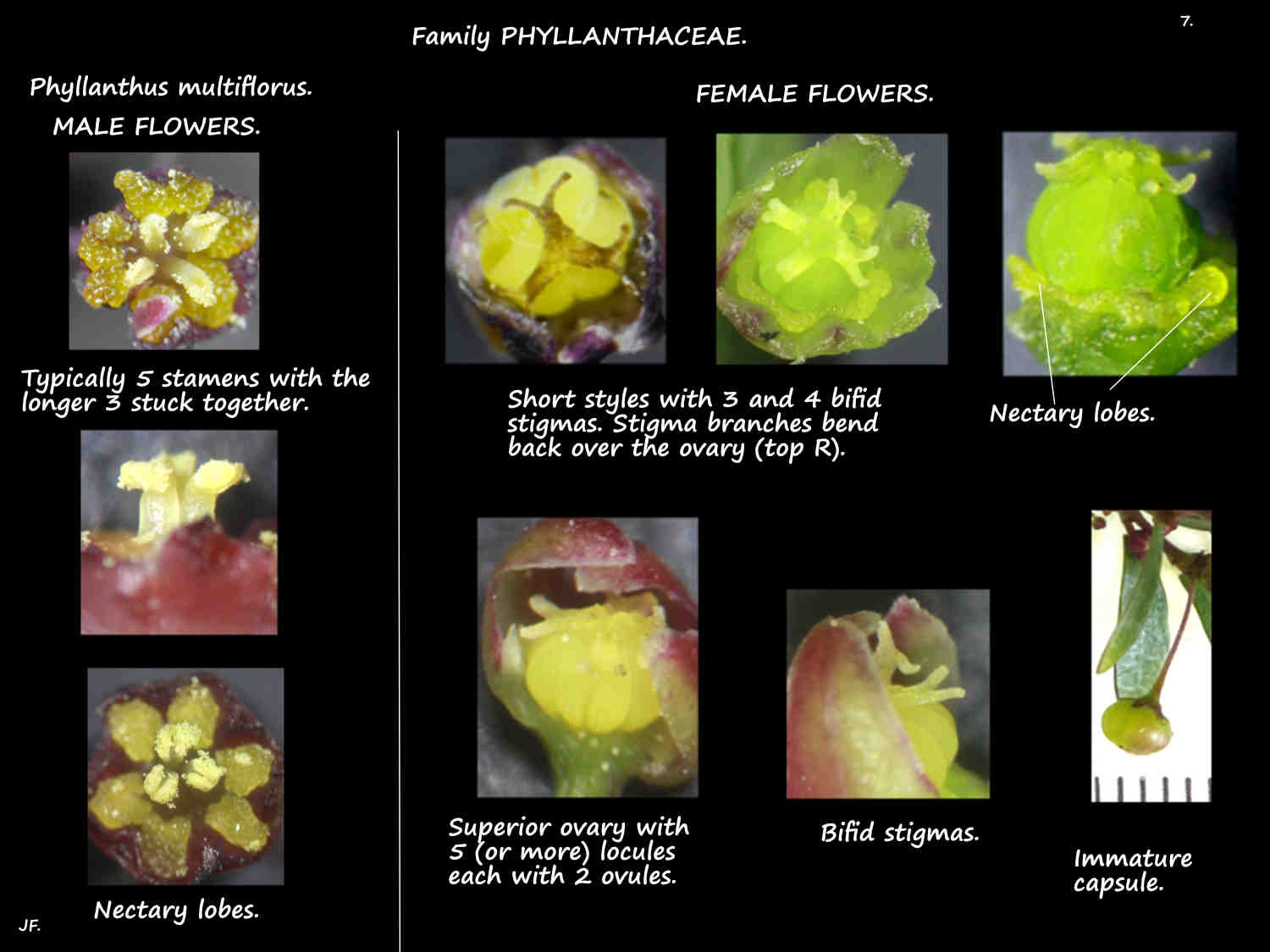Phyllanthus multiflorus.
Plants of the World Online (Kew) recognises 2 synonyms Phyllanthus grandiflorus and Menarda pulchella.
A tropical plant native to South America it is said to be widespread in parts of Queensland.
The dense evergreen shrubs are up to 1 (2 to 4) m high and 2 m wide.
They are much-branched with phyllanthoid branching (see the genus notes).
The sometimes weeping or cascading lateral branches give it the common name of Waterfall plant.
Brownish stems have simple hairs when young.
Lateral branches, up to 15 cm long have short dense hairs.
The alternate foliage leaves are on a hairy petiole a few mms long.
The branches resemble a pinnate leaf as the leaves are in 2 ranks (one plane) along it.
At the base of each leaf is a persistent stipule around 2 mm long with a pointed tip.
The typically elliptic to ovate blades are around 1 to 2 cm long.
The base is rounded to wedge-shaped and the tip is usually rounded.
Young leaves may have a few hairs and the veins are prominent on both surfaces.
The short flowering lateral branches have pendant axillary inflorescences.
Flowers are unisexual with male and female on the same plant (monoecious).
Each leaf axil along a flowering stem usually has 1 (0 – 2) female and 2 or 3 male flowers.
They are on thin pedicels 5 to 10 mm long that may be smooth or slightly hairy.
Male pedicels are slightly longer than the female ones.
Flowers have 5 or 6, sometimes unequal obvate to elliptic sepals in 2 whorls.
Up to 1 or 1.5 mm long they are pink to red with a few hairs on the base inside.
There are 5 or 6 tiny smooth nectary (disk) glands and no petals.
Male flowers have 5 stamens with the 3 longer ones stuck together to form a column.
Anthers open through longitudinal slits and there is no rudimentary ovary.
Female flowers have a 1 mm high superior ovary of 5 or more carpels and locules with 2 ovules in each.
The very short styles are free and have stigmas with 2 lobes or branches.
The fruit are capsules around 5 mm wide and 3 m long with 3-angled brown seeds.
The shrubs are similar to another exotic Phyllanthus myrtifolius.
J.F.

